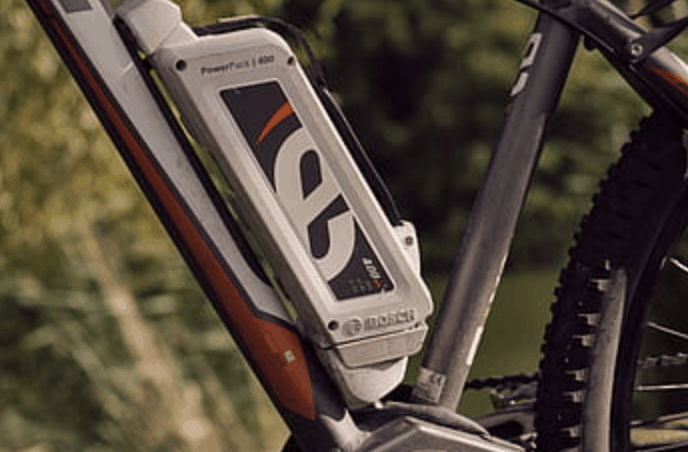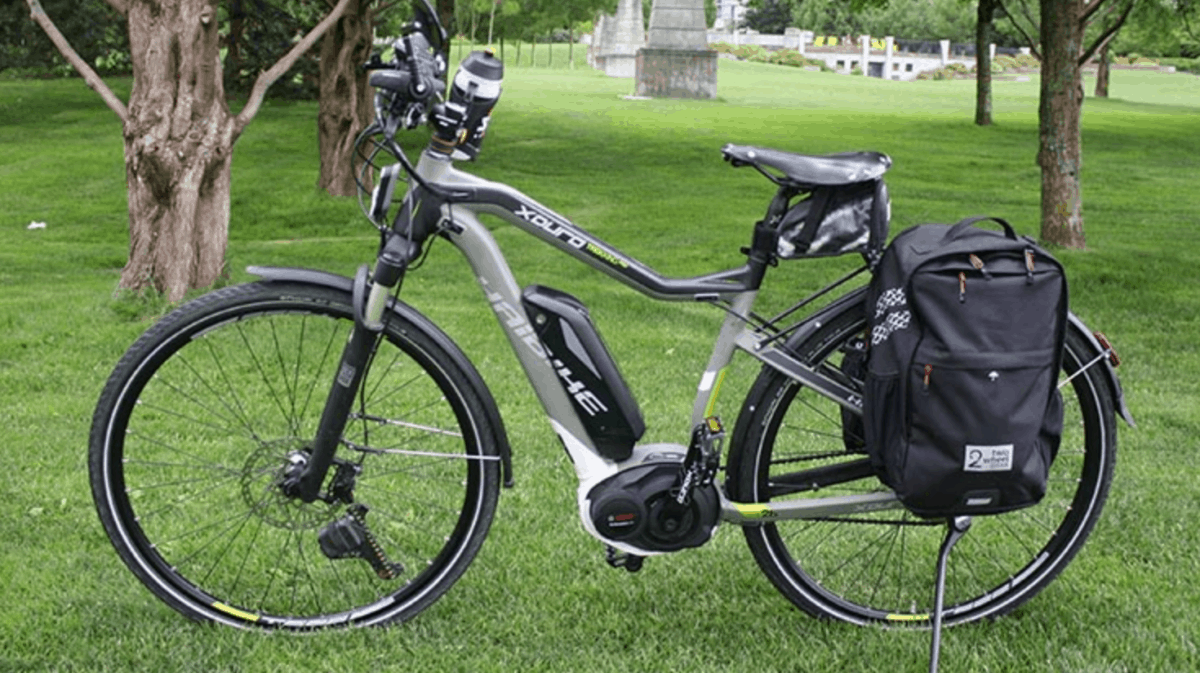Mountain biking is a great hobby to have, but it is not for everyone. However, electric assist mountain bikes can make mountain biking an option for you even if you are not able to do mountain biking otherwise.
What is an electric assist mountain bike? An electric assist mountain bike is a mountain bike that has added parts, including a motor and a battery. This allows you to move forward without having to spend as much energy pedaling.
It can be hard to pedal up and down the often-steep mountain biking trails. Older people are not the only group who sometimes find this too hard to manage. If you are recovering from a long illness are getting over an injury to one of your legs, you may also need the help of an electric assist mountain bike.
The Key Parts Of An Electric Assist Mountain Bike
An electric assist mountain bike has four key parts that make it up: the mountain bike frame, the battery, the motor, and the brakes. Each of these four things is equally important in the quality of an electric assist mountain bike.
The Frame
The frame of an electric assist mountain bike is the foundation for the rest of the bike. Any bike of any kind has to support your weight, but an electric mountain bike also has to support the weight of all the extra parts as well.

Frames for electric bikes of any kind usually try to strike a balance between being durable enough to protect the electric parts from damage while being light enough to not weigh too much. The more the whole bike weighs, the slower the speed will be, and the faster the battery will run out.
Particular care is usually given to the spokes on the wheels when making an electric assist mountain bike. This is because the motor can spin the wheels with an extra amount of force. If the spokes on the wheels are cheaply made, they could easily bend or get buckled.
Finally, extra care is also often put into the suspensions. You do not really want your electric parts to get jostled too much out on the trail. Some jostling is unavoidable on mountain biking trails, but too much can potentially jostle something out of place.
For this reason, electric mountain bikes are most often found with suspensions for both wheels. You can find hardtail electric mountain bikes, but it is generally better to go with the full suspension to make it easier on your bike.
The Batteries
Electric assist mountain bikes can be pretty obvious with a battery pack attached to a part of the frame. Most of the time, this bulge is mounted somewhere in between the wheels, though occasionally it can be placed on the seat tube.
The batteries are obviously one of the key parts of an electric assist mountain bike since these give your bike the power it needs to push your forward. In theory, almost any type of battery will work on a bike like this.
However, for mountain biking, the battery has to be much more specific. For starters, the battery will need to have enough power to push you forward even if you are going uphill. You will also need the battery to be as light as possible too.
A heavy battery will weigh you down, pulling you back down a hill and making you and your bike have to work harder to pull you uphill. If your battery runs out, this extra weight will also slow you down. This is why lightweight lithium batteries are often used for electric mountain bikes.
Most electric bike batteries make somewhere around 350 to 500 watts of power. However, as better batteries for bikes are made, this number is starting to go up a little. This many watts can give you anywhere between 10 to 40 miles of assistance, depending on the terrain.
This also depends on how much you are pedaling and how much you are relying on the assist. As for speed, this is usually somewhere between 10 and 25 miles per hour though, again, newer and improved batteries and motors can give you a speed closer to 30 miles per hour.
The Motor
The motor is, of course, just as important as the battery is for an electric assist mountain bike. Most motors for bikes of any kind are built to be as compact as possible. These can be built into the hub, or into the lower of the horizontal bars of the mountain bike.
It is the job of the motor to take power from the battery and to turn that power and use it to push you forward. Since, once again, you will be going uphill some of the time, the motor needs to be powerful enough to push you uphill.
However, you still do not want the motor to be heavy for the same reasons you do not want your battery to be heavy. Larger motors generally let you go a little faster, but they also drain the battery faster and add to the weight.
The Brakes
While sometimes counted as being part of the frame, the brakes of an electric assist mountain bike are sometimes slightly different than the brakes on a normal mountain bike. Simply put, these have to be made to have enough stopping force to stop the bike even when you are traveling at a faster speed.
Lately, there has been some experimentation in recent years with something that is called regenerative braking. What this means is that whenever you pedal the bike, go downhill, or any other situation in which the bike wheels move without the motor, the motor in the bub starts reverse charging.
In theory, this reverse charging could help your batteries last a lot longer and even start to charge back up. However, in practice, reverse charging is not nearly as practical. A mountain bike with a rider on it has very little mass and velocity.
This means that you don’t really gain much energy form this, if you gain any, though it does prevent you from losing any energy. However, if you are into downhill mountain biking anyway, then this could very well be something that would work if this type of design is ever perfected.
Final Thoughts
A couple of the newest electric assist mountain bikes are starting to make their designs more subtle. These bikes look almost like normal mountain bikes at first glance, requiring a closer inspection to see that one of two of the tubes are slightly thicker to hide the fact that there is even a battery and a motor at all.
Since some mountain bikers feel quite strongly that using an electric mountain bike is cheating, making it less obvious that your bike is an electric one can help you feel less self-conscious if you are concerned about it.
You should also know that there is a difference between full power and power assist mountain bikes. Many full power bikes have an assist mode, but not all electric assist mountain bikes have a full power mode.
Full power bikes do everything for you so that you do not have to do any pedaling at all. These wear out really quickly, and they are heavy and bulky. If they can be put into a power assist mode, you can pedal some too.
This helps the battery to last longer but, due to the bulky frame, the battery will likely not last as long as the battery of a purely assisting electric mountain bike. An electric assist mountain bike that does not have a full power option can cut back on some weight and will, therefore, last you a little longer.
Finally, if you are concerned about the environment, there are two sides to an electric mountain bike. On the one hand, both making and disposing of batteries is not good for the environment. On the other hand, electric bikes are still nowhere near as polluting as vehicles, though they may not be as clean as a non-electric bike.

